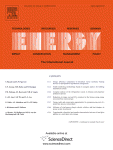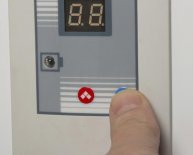
Heating Efficiency comparison
 Hypothermia is circumstances when the temperature of a person body is underneath the regular temperature, aided by the onset of the hypothermic state commonly thought to be 36 °C. This state could be experienced because experience of a rather cold environment when you look at the out-of-doors or, amazingly, in a hospital working area. Inside latter situation, the diminution of metabolic heat generation, in conjunction with reasonable conditions into the surroundings and absence of a covering on the afflicted body parts, produces the alternative of hypothermia. There are numerous readily available devices that are designed to defend against the onset of hypothermia. These at this time most often utilized products are positioned in two categories: (a) convective air heating and (b) direct-contact heat conduction. The warming principles that underlie those two approaches are distinctly different. Also, the energy efficiencies of the two techniques vary significantly. The vitality penalty which results from the various efficiencies is compounded because of the fact that the part of the feedback energies to these products which escapes into the running area ambient must certanly be removed to maintain a cushty temperature the surgical staff. Since energy-extracting tools including air-conditioning devices tend to be far from being perfectly efficient, the heat-extraction procedure in addition presents wasted energy.
Hypothermia is circumstances when the temperature of a person body is underneath the regular temperature, aided by the onset of the hypothermic state commonly thought to be 36 °C. This state could be experienced because experience of a rather cold environment when you look at the out-of-doors or, amazingly, in a hospital working area. Inside latter situation, the diminution of metabolic heat generation, in conjunction with reasonable conditions into the surroundings and absence of a covering on the afflicted body parts, produces the alternative of hypothermia. There are numerous readily available devices that are designed to defend against the onset of hypothermia. These at this time most often utilized products are positioned in two categories: (a) convective air heating and (b) direct-contact heat conduction. The warming principles that underlie those two approaches are distinctly different. Also, the energy efficiencies of the two techniques vary significantly. The vitality penalty which results from the various efficiencies is compounded because of the fact that the part of the feedback energies to these products which escapes into the running area ambient must certanly be removed to maintain a cushty temperature the surgical staff. Since energy-extracting tools including air-conditioning devices tend to be far from being perfectly efficient, the heat-extraction procedure in addition presents wasted energy.
Experiments were done to determine the energy-utilization efficiencies for the representative products inside two groups cited above. These details, taken alongside the understood efficiencies of air-conditioning machines, allowed a standard effectiveness encompassing the therapeutic unit in addition to heat-extraction product is computed. The experimental data revealed the particulars of individual products within a category played a more substantial part with regard to energy savings than did the category it self.
Keywords
- Health product;
- Energy savings;
- Hypothermia














